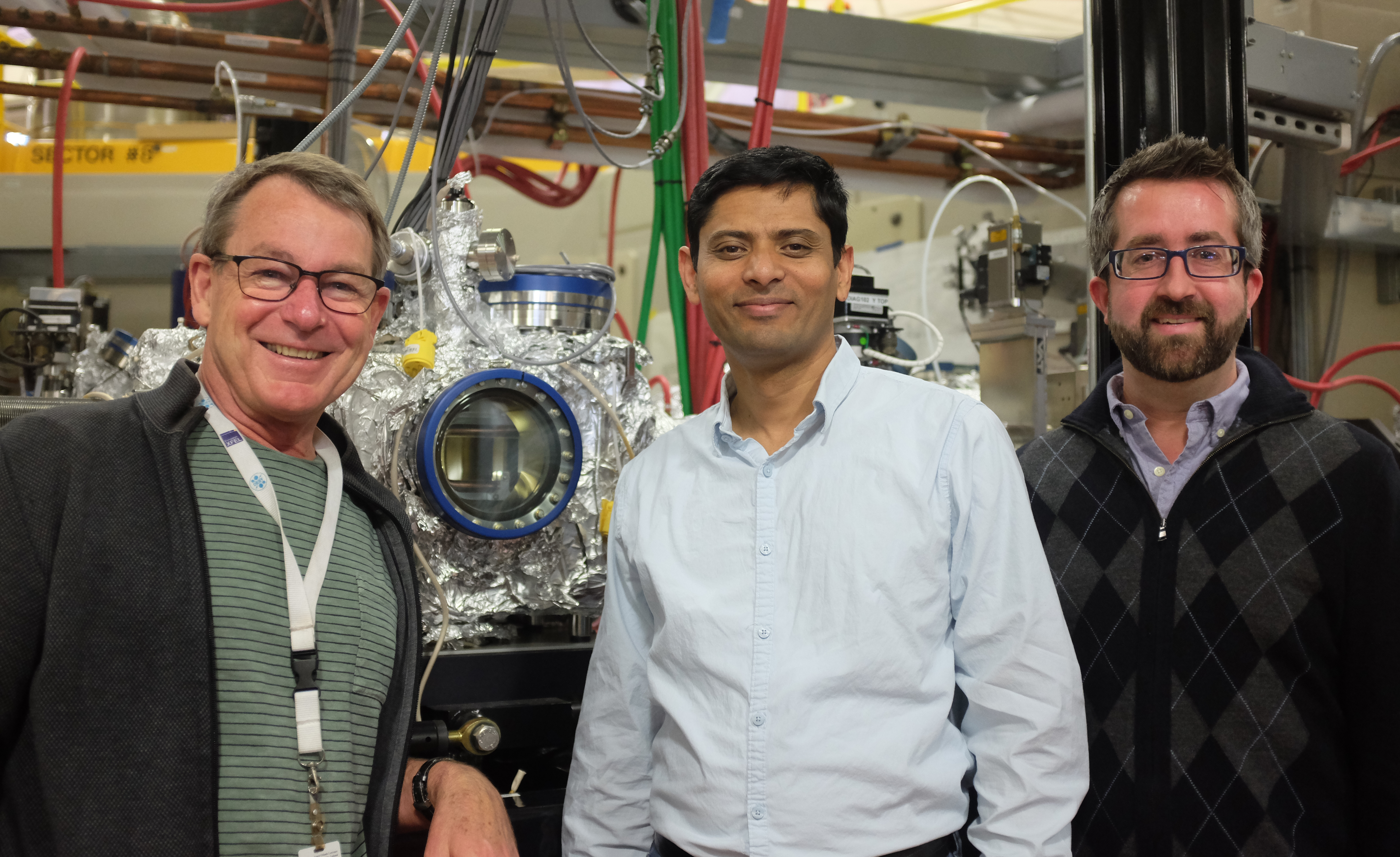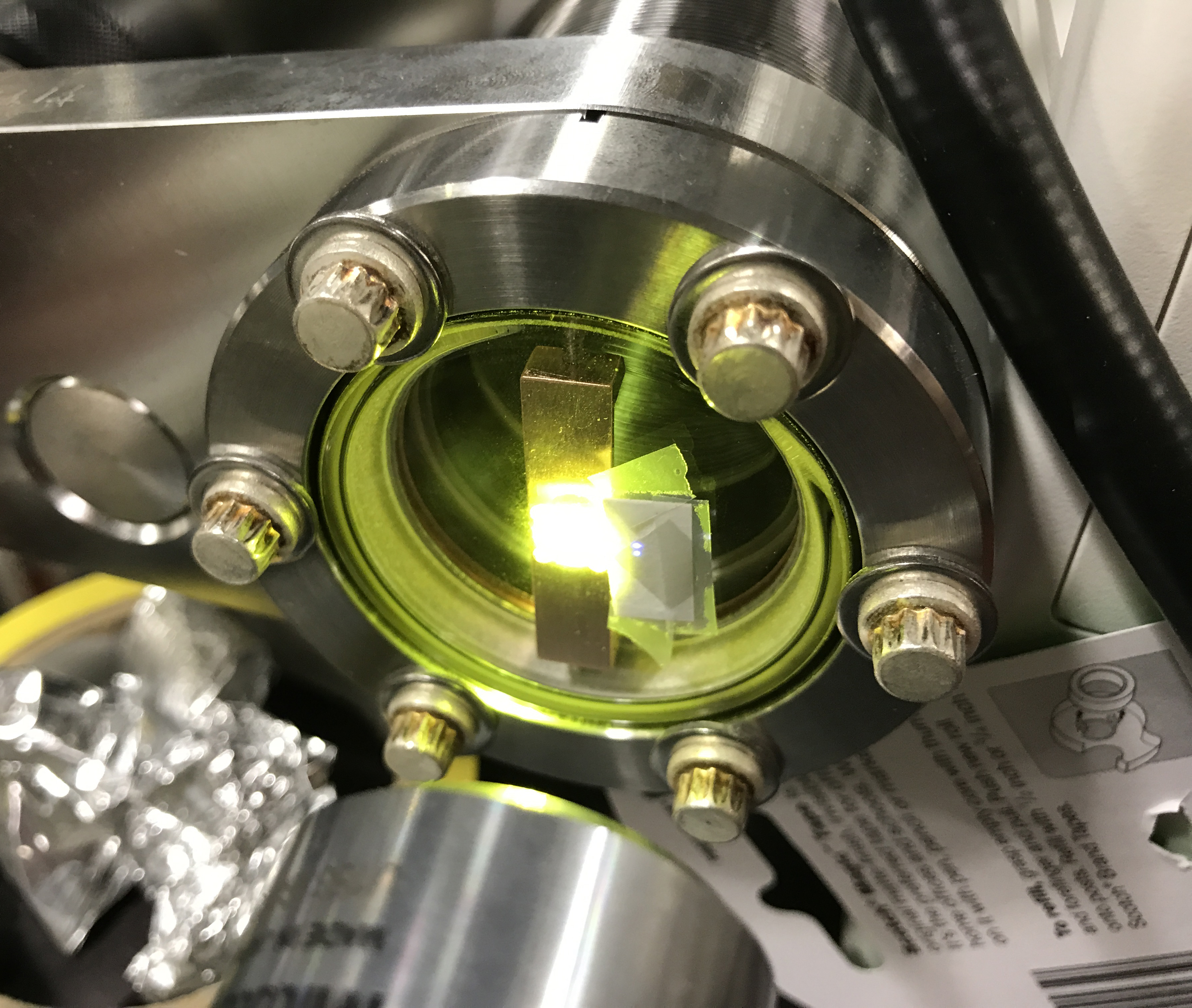by Lori Tamura
On Wednesday, March 29, the COherent Scattering and MICroscopy (COSMIC) Beamline (7.0.1) achieved first light, a significant milestone in the ALS’s plans to capitalize on recent gains in soft x-ray coherence provided by modern storage-ring light sources.
According to project lead Tony Warwick, the COSMIC beamline and its two branchlines, one for scattering and one for microscopy, are optimized to take advantage of ongoing improvements in soft x-ray coherence. “The C-O in the name stands for coherent,” said Warwick, “it applies to both scattering and microscopy.” With future upgrades to its optical elements, COSMIC will also be poised to fully benefit from the dramatic improvements in coherence to be provided by the proposed ALS Upgrade project (ALS-U). “COSMIC is ready for ALS-U,” said Warwick.

Sujoy Roy is the scientist leading the development of the scattering branch of the beamline. Its primary scientific technique, x-ray photon correlation spectroscopy (XPCS), provides a method to study nanoscale fluctuations in materials as a way to better understand ordered phenomena, such as ferromagnetism and superconductivity.
“The time scales of the fluctuations that we can measure are limited by the coherent flux,” said Roy. When there are fewer coherent photons reaching the sample, longer exposure times are needed to compensate. Thus, the time resolution will improve from seconds (or more) at Beamline 12.0.2 (where these studies were previously done), to milliseconds with COSMIC and microseconds (or faster) with ALS-U.

Other features of note for scattering experiments include the ability to utilize circularly polarized light and an endstation with an in situ magnet (producing a 0.5-T field) and cooling down to 10 K. “As far as I know,” said Roy, “this will be the only such endstation available so far in the U.S., possibly in the world.”
David Shapiro is the lead scientist for the microscopy branch. Specifically, it’s designed for a type of microscopy called ptychography—where an image is calculated from coherent scattering data. This removes the resolution restriction placed on the imaging system by the x-ray optics, so that resolution is dependent only on the coherent flux.
“Under the ideal situation, where we have very high-contrast samples, we’ll be able to image at the x-ray wavelength, which nobody else can do,” said Shapiro. “I think COSMIC is going to bring x-ray microscopy much closer to the capabilities of electron microscopy, but with the added benefit of x-rays, which is that you can penetrate lots of material.”

According to Shapiro, this endstation will incorporate a variety of interesting sample environments for in situ, in operando studies of subjects such as batteries and catalysis. It will also incorporate the ability to perform cryo-tomography of cells or organelles. “I think it’s going to be a very powerful instrument that a lot of people will be interested in,” he said.
Warwick and Simon Morton (who is working on beamline designs for ALS-U) are currently commissioning the beamine, which they anticipate will take a couple of months. Commissioning should begin for Shapiro’s coherent microscopy endstation this summer, and for Roy’s coherent scattering endstation by the end of the calendar year.
Members of the COSMIC team include Tony Warwick, Simon Morton, and Rich Celestre, under the leadership of Howard Padmore (beamline design); Jeff Takakuwa, Adrian Spucces, Troy Stevens, and Ken Chow (beamline engineering); and Sujoy Roy and David Shapiro (beamline scientists). Congratulations to all!